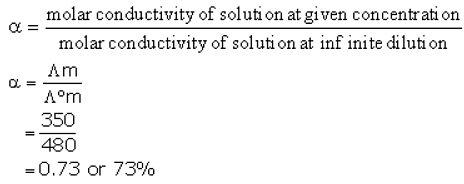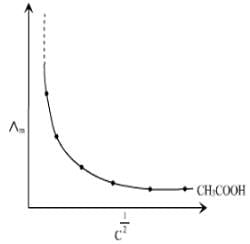NEET Exam > NEET Tests > Chemistry Class 12 > Test: Kohlrausch’s Law - NEET MCQ
Test: Kohlrausch’s Law - NEET MCQ
Test Description
10 Questions MCQ Test Chemistry Class 12 - Test: Kohlrausch’s Law
Test: Kohlrausch’s Law for NEET 2024 is part of Chemistry Class 12 preparation. The Test: Kohlrausch’s Law questions and answers have been
prepared according to the NEET exam syllabus.The Test: Kohlrausch’s Law MCQs are made for NEET 2024 Exam. Find important
definitions, questions, notes, meanings, examples, exercises, MCQs and online tests for Test: Kohlrausch’s Law below.
Solutions of Test: Kohlrausch’s Law questions in English are available as part of our Chemistry Class 12 for NEET & Test: Kohlrausch’s Law solutions in
Hindi for Chemistry Class 12 course. Download more important topics, notes, lectures and mock
test series for NEET Exam by signing up for free. Attempt Test: Kohlrausch’s Law | 10 questions in 15 minutes | Mock test for NEET preparation | Free important questions MCQ to study Chemistry Class 12 for NEET Exam | Download free PDF with solutions
Detailed Solution for Test: Kohlrausch’s Law - Question 1
Detailed Solution for Test: Kohlrausch’s Law - Question 2
| 1 Crore+ students have signed up on EduRev. Have you? Download the App |
Detailed Solution for Test: Kohlrausch’s Law - Question 3
Test: Kohlrausch’s Law - Question 4
Molar conductivity for a compound AB is 145.0 Scm2mol-1 and for CB is 110.1 Scm2mol-1. Limiting molar conductivity for A+ is 73.5 Scm2mol-1. What is limiting molar conductivity for C+?
Detailed Solution for Test: Kohlrausch’s Law - Question 4
Detailed Solution for Test: Kohlrausch’s Law - Question 5
Test: Kohlrausch’s Law - Question 6
Conductivity of a solution contained within 1 centimetre cube volume is known as:
Detailed Solution for Test: Kohlrausch’s Law - Question 6
Detailed Solution for Test: Kohlrausch’s Law - Question 7
Test: Kohlrausch’s Law - Question 8
At 300K molar conductivity of solution A is 350 units, and at infinite dilution the molar conductivity of the same sample is 480 unit. Predict the percentage dissociation of the electrolyte.
Detailed Solution for Test: Kohlrausch’s Law - Question 8
Test: Kohlrausch’s Law - Question 9
For weak electrolytes ∧mo cannot to be calculated by extrapolation of ∧mo vs (c)1/2graph. Which of the following is not the reason?
Detailed Solution for Test: Kohlrausch’s Law - Question 9
Test: Kohlrausch’s Law - Question 10
With increase in temperature the degree of dissociation of electrolyte:
|
100 videos|282 docs|123 tests
|
Information about Test: Kohlrausch’s Law Page
In this test you can find the Exam questions for Test: Kohlrausch’s Law solved & explained in the simplest way possible.
Besides giving Questions and answers for Test: Kohlrausch’s Law, EduRev gives you an ample number of Online tests for practice



















